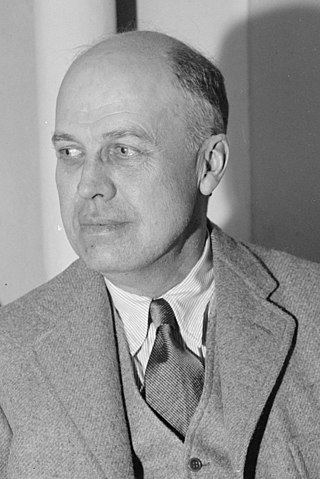
Edward Hopper was an American realist painter and printmaker. While he is widely known for his oil paintings, he was equally proficient as a watercolorist and printmaker in etching.

The Whitney Museum of American Art, known informally as "The Whitney", is a modern and contemporary American art museum located in the Meatpacking District and West Village neighborhoods of Manhattan in New York City. The institution was originally founded in 1930 by Gertrude Vanderbilt Whitney (1875–1942), a prominent American socialite, sculptor, and art patron after whom it is named.
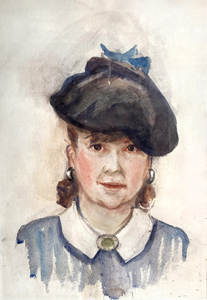
Josephine Verstille Hopper was an American painter who studied under Robert Henri and Kenneth Hayes Miller, and won the Huntington Hartford Foundation fellowship. She was the wife of Edward Hopper, whom she married in 1924.

Nighthawks is a 1942 oil-on-canvas painting by the American artist Edward Hopper that portrays four people in a downtown diner late at night as viewed through the diner's large glass window. The light coming from the diner illuminates a darkened and deserted urban streetscape.

Richard Estes is an American artist, best known for his photorealist paintings. The paintings generally consist of reflective, clean, and inanimate city and geometric landscapes. He is regarded as one of the founders of the international photo-realist movement of the late 1960s, with such painters as John Baeder, Chuck Close, Robert Cottingham, Audrey Flack, Ralph Goings, and Duane Hanson. Author Graham Thompson writes "One demonstration of the way photography became assimilated into the art world is the success of photorealist painting in the late 1960s and early 1970s. It is also called super-realism or hyper-realism and painters like Richard Estes, Denis Peterson, Audrey Flack, and Chuck Close often worked from photographic stills to create paintings that appeared to be photographs."

Hotel Lobby is a 1943 oil painting on canvas by American realist painter Edward Hopper; it is held in the collection of the Indianapolis Museum of Art (IMA), in Indianapolis, Indiana, United States.

Rosalind Bengelsdorf was an American painter, art critic and educator. She is also known as Rosalind Bengelsdorf Browne and as Rosalind Browne.

East Wind Over Weehawken is an 1934 oil painting on canvas by American realist painter Edward Hopper. It was held in the collection of the Pennsylvania Academy of Fine Arts in the United States from 1952 until its sale to an anonymous buyer in December 2013. That sale brought a record price for a Hopper.
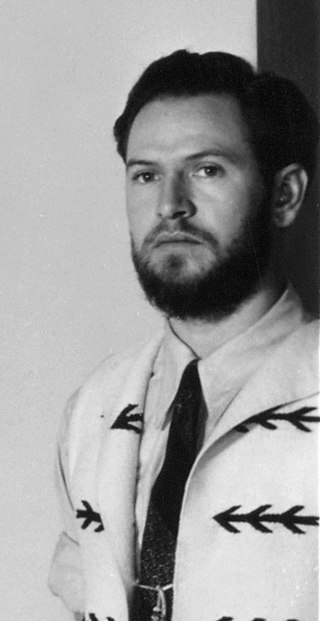
Frank Albert MechauJr. was an American artist and muralist. His work has been featured in many national and international exhibitions. Many of his paintings are currently in private collections and museums around the U.S., and his murals are on the walls of public buildings in Colorado, Nebraska, Texas, and Washington, D.C.
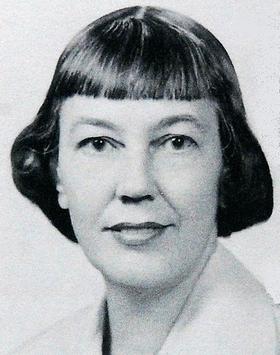
Tracy Montminy, who completed early works as Elizabeth Tracy, (1911–1992) was an American artist and muralist. During the WPA's era, she painted murals in civic buildings, including murals in the library in Cambridge, Massachusetts; the fire and police building of Saugus, Massachusetts; the Milton, Massachusetts, post office; Medford, Massachusetts City Hall; the post office of Downers Grove, Illinois; and the post office in Kennebunkport, Maine, as well as others both in the U.S. and abroad. She was an art instructor at the University of Missouri and the American University of Beirut, continuing her own painting projects simultaneously with her teaching into the 1980s. Upon her death, she established a trust to create the Montminy Art Gallery in Columbia, Missouri.

Niles Spencer was an American painter of the Precisionist School who specialized in depicting urban and industrial landscapes. His works are in the permanent collections of several major museums including the Metropolitan Museum of Art, the Whitney Museum of American Art, and MoMA.

New York Movie is an oil on canvas painting by American painter Edward Hopper. The painting was begun in December of 1938 and finished in January of 1939. Measuring 32 1/4 x 40 1/8", New York Movie depicts a nearly empty movie theater occupied with a few scattered moviegoers and a pensive usherette lost in her thoughts. Praised for its brilliant portrayal of multiple light sources, New York Movie is one of Hopper's well-regarded works. Despite the fact that the movie in the painting itself is not known, Hopper's wife and fellow painter Josephine Hopper wrote in her notes on New York Movie that the image represents fragments of snow-covered mountains.

Ground Swell is a 1939 painting by American artist Edward Hopper which depicts five people on a heeling catboat in a light swell, looking at an ominous buoy. It was in the collection of the Corcoran Gallery of Art from 1943 until it was purchased by the National Gallery of Art in Washington, D.C. in 2014.

Tornado over Kansas, or simply The Tornado, is a 1929 oil-on-canvas painting by the American Regionalist painter John Steuart Curry. It depicts a dramatic scene in which a family races for shelter as a tornado approaches their farm, and has compositional connections to Curry's earlier 1928 painting Baptism in Kansas. The artist is believed to have been influenced by Baroque art and photographs of tornadoes. He developed a fear of natural disasters and a reverence towards God during his childhood, both of which are apparent in the painting.
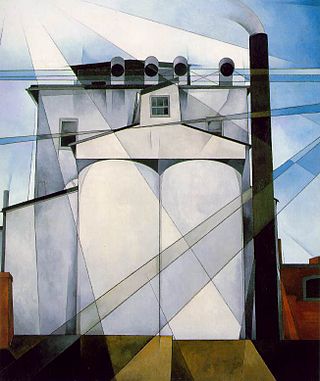
My Egypt is a 1927 painting by the American artist Charles Demuth. It depicts a grain elevator from the artist's hometown of Lancaster, Pennsylvania, and is considered a "masterpiece" and "emblem" of the Precisionist art movement.

New Deal artwork is an umbrella term used to describe the creative output organized and funded by the Roosevelt administration's New Deal response to the Great Depression. This work produced between 1933 and 1942 ranges in content and form from Dorothea Lange's photographs for the Farm Security Administration to the Coit Tower murals to the library-etiquette posters from the Federal Art Project to the architecture of the Solomon Courthouse in Nashville, Tennessee. The New Deal sought to "democratize the arts" and is credited with creating a "great body of distinguished work and fostering a national aesthetic."

Dangers of the Mail is a 1937 mural by Frank Mechau installed in the William Jefferson Clinton Federal Building in Washington, D.C. Commissioned by Treasury Department Section of Fine Arts, the mural is one of 25 New Deal artworks in the building. Dangers of the Mail faced criticism and objections at the time of its creation for lewdness and in the 21st century for stereotypical portrayals of Native Americans and depictions of sexualized violence causing a hostile workplace environment. Since the early 2000s, the mural has been curtained from public view and is viewable only by appointment.
Octagon House is a 1937 serialized novel by Phoebe Atwood Taylor that was distributed by the Associated Press and appeared in multiple newspapers in the United States.
Karal Ann Marling is an American cultural historian and writer. A professor emerita of the University of Minnesota, she is an American studies scholar with a special focus on the visual arts. The New York Times described her as a "keen-eyed critic of American popular culture." One book reviewer described her as a stylistic and intellectual heir to both Erma Bombeck and Tom Wolfe.

Sun in an Empty Room is a 1963 painting by American realist Edward Hopper (1882–1967). It is a late period painting completed at his Cape Cod summer home and studio in South Truro, Massachusetts, just four years before his death at age 84. The work depicts a room, seemingly empty, except for light coming through a window, reflecting along the walls and floor. Leaves on a tree or bush can be seen just outside the window.


















